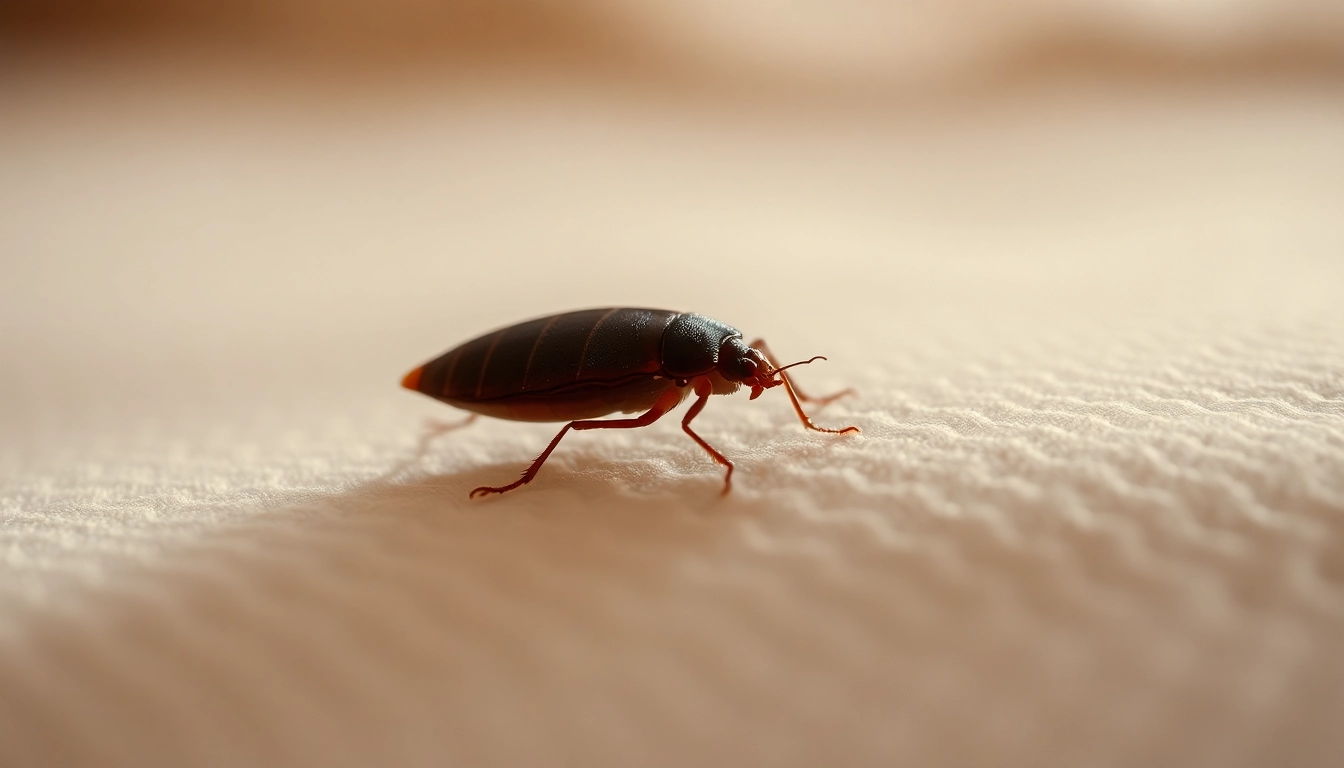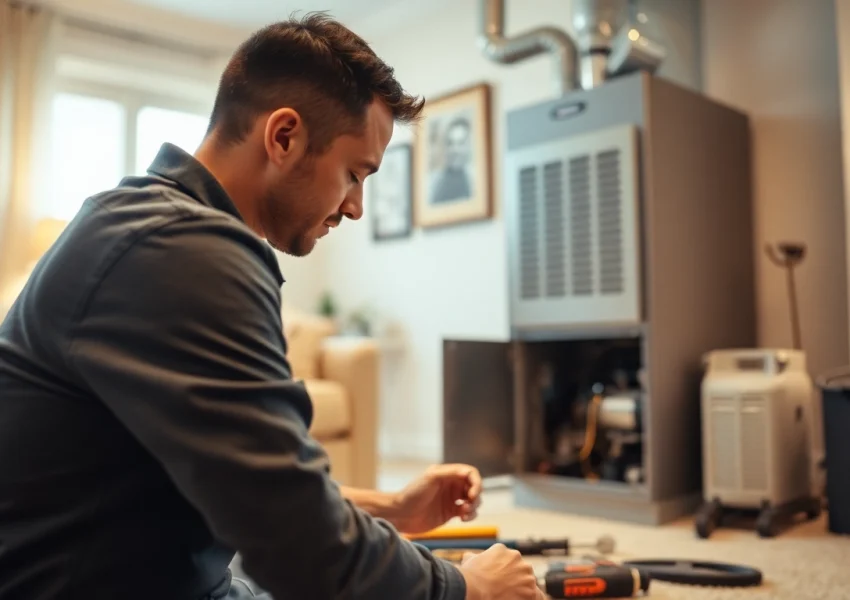Understanding Bed Bugs
What are Bed Bugs?
Bed bugs, scientifically known as Cimex lectularius, are small, flat, oval-shaped insects that feed on the blood of humans and animals. These nocturnal pests are usually active at night and can be found in a variety of environments, typically infesting beds, couches, and other upholstery where their hosts rest. Adult bed bugs are about the size of an apple seed, measuring around 5 to 7 mm in length, while newly hatched nymphs are much smaller and practically invisible to the naked eye. They are rusty-brown in color, making them difficult to spot against various surfaces.
Signs of a Bed Bug Infestation
Identifying a bed bug infestation early can save you from further complications and extensive treatments. Signs include:
- Bite Marks: Small, red, itchy welts often appear on the skin in patterns or clusters.
- Physical Evidence: Look for the actual bugs themselves, as well as their eggs (which are tiny and white) and shed skins.
- Fecal Stains: Dark, rust-colored spots that can be found on bedding, mattress seams, or nearby furniture are signs of bed bug excrement.
- Unpleasant Odor: An infestation can produce a musty or sweet smell described as vaguely similar to spoiled raspberries.
The Life Cycle of Bed Bugs
Understanding the life cycle of bed bugs is crucial for effective Bed Bug Control. Bed bugs undergo five stages of development, each requiring a blood meal to progress. The stages include:
- Eggs: Bed bug eggs are tiny, measuring about 1 mm, and are usually laid in clusters in hidden areas.
- Nymphs: After hatching, nymphs go through five molts before becoming adults, generally growing in size with each molt.
- Adults: Mature bed bugs can live for several months without feeding, making them resilient pests.
Methods of Bed Bug Control
Non-Chemical Control Techniques
Integrating non-chemical control methods can be highly effective and is often recommended as part of an Integrated Pest Management (IPM) approach. Strategies include:
- Heat Treatment: Exposing bed bugs to high temperatures (above 122°F) can eliminate them at all life stages. Using steamers on furniture and bedding is an effective method.
- Vacuuming: Regularly vacuuming areas where bed bugs are likely to inhabit can help remove them. Disposing of the vacuum bag immediately afterward is essential.
- Clutter Reduction: Keeping living spaces clutter-free minimizes hiding spots and simplifies the monitoring and treatment process.
Chemical Treatments and Pesticides
If non-chemical strategies are insufficient, pesticide application may be necessary. It is crucial to choose products specifically designed for bed bugs to ensure effectiveness. Available options include:
- Insecticides: Pyrethroids and neonicotinoids are commonly used, but bed bugs can develop resistance, making it necessary to rotate between different classes of chemicals.
- Desiccants: These materials work by drying out the bed bugs and can be an effective component in a comprehensive control effort.
Integrated Pest Management Strategies
A holistic approach combining both chemical and non-chemical methods forms the foundation of effective bed bug control. This method includes:
- Inspection: Conducting thorough inspections of potential hiding areas and surrounding environments.
- Monitoring: Using interceptors and mattress encasements to track activity and protect your sleeping space.
- Treatment Follow-up: Regular follow-ups and monitoring are essential to ensure that the infestation has been completely eradicated and to prevent a resurgence.
DIY Bed Bug Control Solutions
Preparing Your Home for Treatment
Before implementing any DIY treatment, proper preparation is crucial for effectiveness. Consider the following steps:
- Declutter: Remove all unnecessary items from the space, making it easier to treat and inspect.
- Launder Bedding and Clothing: Using hot water and a high dryer setting will help kill any bed bugs or eggs present.
- Seal and Store: Pack items that cannot be washed in sealed plastic bags to prevent potential spread.
Effective Home Remedies
While professional treatments are often necessary, various home remedies can help manage small infestations. Some popular options include:
- Essential Oils: Some oils like lavender, tea tree, and peppermint have insect-repelling properties, although they might not be sufficient to eradicate an infestation.
- Alcohol: Rubbing alcohol can kill bed bugs on contact but should be used cautiously, as it is flammable.
- Freezing: Items that can tolerate cold can be placed in the freezer for at least four days to kill bed bugs effectively.
Tools and Techniques for DIY Extermination
Effective extermination requires the proper tools and techniques. Essential items may include:
- Steamers: High-temperature steamers can be used on bedding, and upholstery to kill bed bugs effectively.
- Bed Bug Interceptors: Placed under bed posts and furniture legs, these traps can help detect and monitor bed bug activity.
- Vacuum Cleaners: One of the most effective tools for immediate removal of bed bugs in high-traffic areas.
Hiring a Professional Exterminator
When to Consider Professional Help
In some situations, professional help may be necessary. Consider hiring an expert if:
- The infestation is widespread and beyond your control.
- You have already attempted DIY solutions without success.
- Your health is at risk due to allergies or other complications stemming from the bed bug bites.
What to Expect from Extermination Services
Professional extermination services typically involve several steps, including:
- Comprehensive Inspection: A thorough examination of the property to identify the extent of the infestation.
- Customized Treatment Plans: Depending on the severity, exterminators will create tailored strategies that may include chemical treatments, heat treatments, or a combination of methods.
- Follow-Up Inspections: Ensuring that all bed bugs have been eliminated and that preventative measures are in place for the future.
Choosing the Right Pest Control Company
Selecting a qualified pest control company is crucial for effective bed bug eradication. Consider the following when making your choice:
- Experience: Choose a company with a strong history of successful bed bug treatments and a solid reputation.
- Certifications: Ensure that the pest control technicians are certified and knowledgeable about bed bug control methods.
- Reviews: Research customer reviews and testimonials to gauge the company’s reliability and effectiveness.
Preventing Future Infestations
Best Practices for Bed Bug Prevention
Implementing preventative measures is key to avoiding future infestations. Here are some actionable strategies:
- Regular Inspections: Conduct frequent checks in areas prone to bed bugs, such as mattresses, box springs, and behind furniture.
- Traveler’s Precautions: Inspect hotel rooms upon arrival and keep luggage off the floors.
- Encasements: Use protective covers on mattresses and pillows to prevent bed bug entry and harboring.
Protective Measures for Your Home
Homeowners can take additional protective steps to further reduce the likelihood of bed bugs:
- Seal Cracks and Crevices: Fill in gaps around windows, doors, and electrical outlets to limit entry points.
- Carpet Maintenance: Regularly vacuum carpeting, particularly in areas where bed bugs may hide.
- Outdoor Management: If applicable, limit clutter near the home’s foundation and inspect second-hand items before bringing them indoors.
Community Resources for Bed Bug Control
Communities offer various resources to assist residents with bed bug problems, including:
- Local Health Departments: Many local agencies provide guidelines and support for treating and preventing infestations.
- Pest Control Workshops: Educational programs about pest management practices can help residents become informed and proactive.
- Online Support Groups: Forums and social networks can provide shared experiences and solutions from others who have faced similar challenges.






